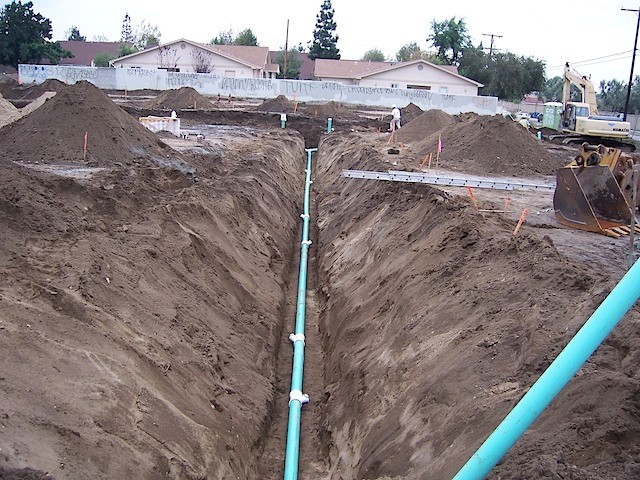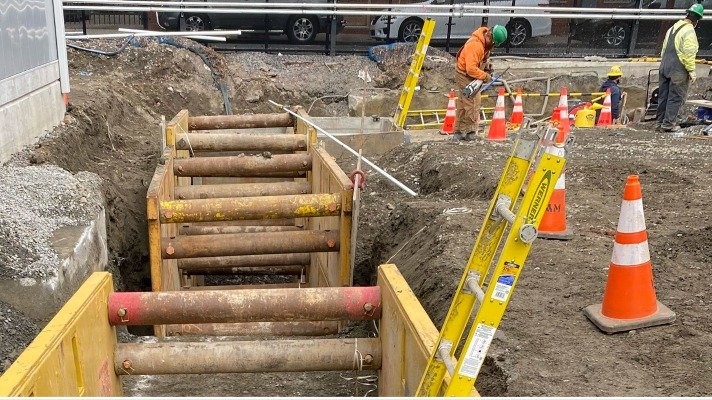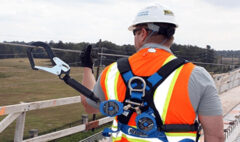Methods of Protection in Excavation and Trenching
Methods of Protection in Excavation and Trenching
Excavation and trenching are integral parts of the construction industry but are fraught with significant hazards. To mitigate these dangers, the Occupational Safety and Health Administration (OSHA) has established comprehensive standards, specified in 29 CFR Part 1926, Subpart P. These regulations are designed to safeguard workers from the myriad risks associated with excavation and trenching activities, including cave-ins, falling loads, hazardous atmospheres, and falls. Effective safety and health training can make a significant difference to improving the knowledge and skills of the workforce. In today’s world top notch health and safety training are available through online safety training platforms provided by high-quality low-cost company’s such as Safety Result Professionals.
Understanding OSHA’s Excavation Standards
The importance of safety and health training cannot be overstated in getting workers to understand OSHA’s excavation standards. OSHA’s excavation standards mandate specific protective measures to ensure the safety of workers involved in excavation and trenching projects. These measures are outlined in 29 CFR Part 1926, Subpart P, and include requirements for protective systems, soil classification, and site inspections. The core focus of these standards is to prevent cave-ins, which are the leading cause of fatalities in excavation work. The regulations stipulate that any trench 5 feet deep or greater requires a protective system unless the excavation is entirely in stable rock.
Protective Systems in Excavation and Trenching
Protective systems are critical for preventing soil from caving in and include methods such as sloping, shoring, and shielding. Each method has specific applications and benefits, depending on the soil conditions, depth of the trench, and other environmental factors.
Sloping
Sloping involves cutting back the trench wall at an angle inclined away from the excavation. The angle of the slope is determined by the type of soil being excavated. OSHA classifies soils into three categories: Type A (most stable), Type B, and Type C (least stable). For Type A soils, the maximum allowable slope is 3/4:1 (horizontal to vertical), for Type B soils, it is 1:1, and for Type C soils, it is 1 1/2:1.

Sloping is advantageous because it doesn’t require additional materials or equipment, reducing costs. However, it may require more space than other methods, making it less suitable for areas with limited room for maneuvering. Workers can gain the knowledge and skills to master sloping requirements through online safety training that contains meticulously crafted safety courses.
Shoring
Shoring involves installing support systems to prevent soil movement and cave-ins. These systems can be made from various materials, including timber, aluminum, and steel. Shoring systems can be divided into two main types:
- Hydraulic Shoring: Uses hydraulic pistons that are pumped outward until they press against the trench walls. This method is quick to install and remove and can be adjusted for different trench widths.
- Beam and Plate Shoring: Involves placing vertical steel beams along the trench walls and securing them with horizontal steel plates. This method is particularly effective for deep excavations and in areas where other utilities or structures are present.
Shoring is beneficial in urban areas or when the excavation is in proximity to existing structures, as it minimizes the risk of ground movement that could affect nearby buildings.

Shielding
Shielding is a critical protective method that can be learned through safety and health training. Shielding, also known as trench boxing, involves placing prefabricated supports, known as trench shields or trench boxes, into the trench to protect workers. Trench boxes are generally made of steel or aluminum and are designed to withstand the pressure from soil walls. They do not prevent cave-ins but provide a safe space for workers if a cave-in occurs.
Trench boxes can be stacked or used in combination with other systems for deeper trenches. They are portable and can be moved along the trench as work progresses, making them highly versatile. However, the trench width needs to accommodate the size of the trench box, which may limit their use in narrower excavations.

Other Protective Measures
In addition to sloping, shoring, and shielding, there are other essential measures to enhance safety in excavation and trenching operations:
- Soil Classification: Proper soil classification is crucial to determine the appropriate protective system. OSHA requires that a competent person, trained in soil analysis, inspect the soil conditions before and during the excavation.
- Site Inspections: Regular inspections by a competent person are mandated by OSHA to ensure the stability of protective systems and the safety of the excavation site. Inspections should occur at the start of each shift, after any event that could increase hazards, such as a rainstorm, and when conditions change.
- Access and Egress: OSHA standards require safe means of access and egress for trenches 4 feet deep or more. This includes ladders, steps, ramps, or other safe means located within 25 feet of all workers.
- Hazardous Atmospheres: Monitoring for hazardous atmospheres is necessary when there is a potential for oxygen deficiency, flammable gases, or toxic substances. Appropriate ventilation and respiratory protection should be provided as needed.
Soil Type Classification

OSHA Trenching and Excavation Safety
https://www.osha.gov/sites/default/files/publications/trench_excavation_fs.pdf
Before you Dig Call 811
Online safety training is significant for the dissemination of clear, concise, and effective communication. Awareness on the call before you dig concept can be learned through safety courses. Calling 811 before you dig is crucial for preventing accidental damage to underground utilities such as gas lines, water pipes, and electrical cables. This free service helps ensure the safety of workers and the public by identifying the location of buried infrastructure, reducing the risk of potentially hazardous disruptions. Avoiding damage to these utilities not only protects lives but also prevents costly repairs and project delays. Additionally, calling 811 is often a legal requirement, and failing to do so can result in significant fines and legal liabilities. Ultimately, this proactive measure promotes a safer, more efficient excavation process and safeguards critical community services.
Convenient Learning Through : Online Safety Training
Online safety and health training play a pivotal role in understanding methods of protection in excavation and trenching. By providing convenient access to comprehensive safety courses, online safety training ensures that workers and supervisors can acquire essential knowledge without the constraints of traditional classroom settings. These safety courses cover critical topics such as soil classification, proper use of protective systems, and OSHA regulations, offering interactive modules, videos, and quizzes to reinforce learning. The flexibility of online health and safety training allows participants to learn at their own pace and revisit complex concepts, ensuring thorough comprehension and retention of safety protocols.
Moreover, online health and safety training fosters a culture of continuous learning and compliance. Regularly updated content ensures that the latest standards and best practices are always accessible, which is crucial for staying abreast of regulatory changes. Health and safety training delivered online also facilitates broader reach, enabling companies to train multiple teams across various locations simultaneously. This widespread access to safety courses enhances overall site safety, reduces the likelihood of accidents, and promotes a safer working environment. In summary, online safety training is an invaluable tool for effectively disseminating vital knowledge about excavation and trenching protection methods, ensuring that all personnel are well-equipped to maintain a safe workplace.
Conclusion
The safety of workers in excavation and trenching operations is paramount. It is incumbent on the employer to provide effective health and safety training to reduce accidents and injuries in the workplace. Carefully crafted safety courses by Safety Result Professionals offered through its online safety training platform presents a low-cost opportunity for meeting the training needs of any workforce. Adhering to OSHA’s standards and implementing effective protective systems such as sloping, shoring, and shielding are essential steps in mitigating risks. By understanding and applying these methods, employers can create safer work environments, reduce the likelihood of accidents, and ensure compliance with regulatory requirements. The commitment to safety not only protects workers but also enhances the overall efficiency and success of construction projects.
Author: Dr. O’Neil G. Blake, Chief Executive Officer (CEO) of Safety Result Professionals
MS., MBA., MSc., BSc, CSP., ASP., CSHM., CSMP., MRSA.
Date: 05-28-2024












